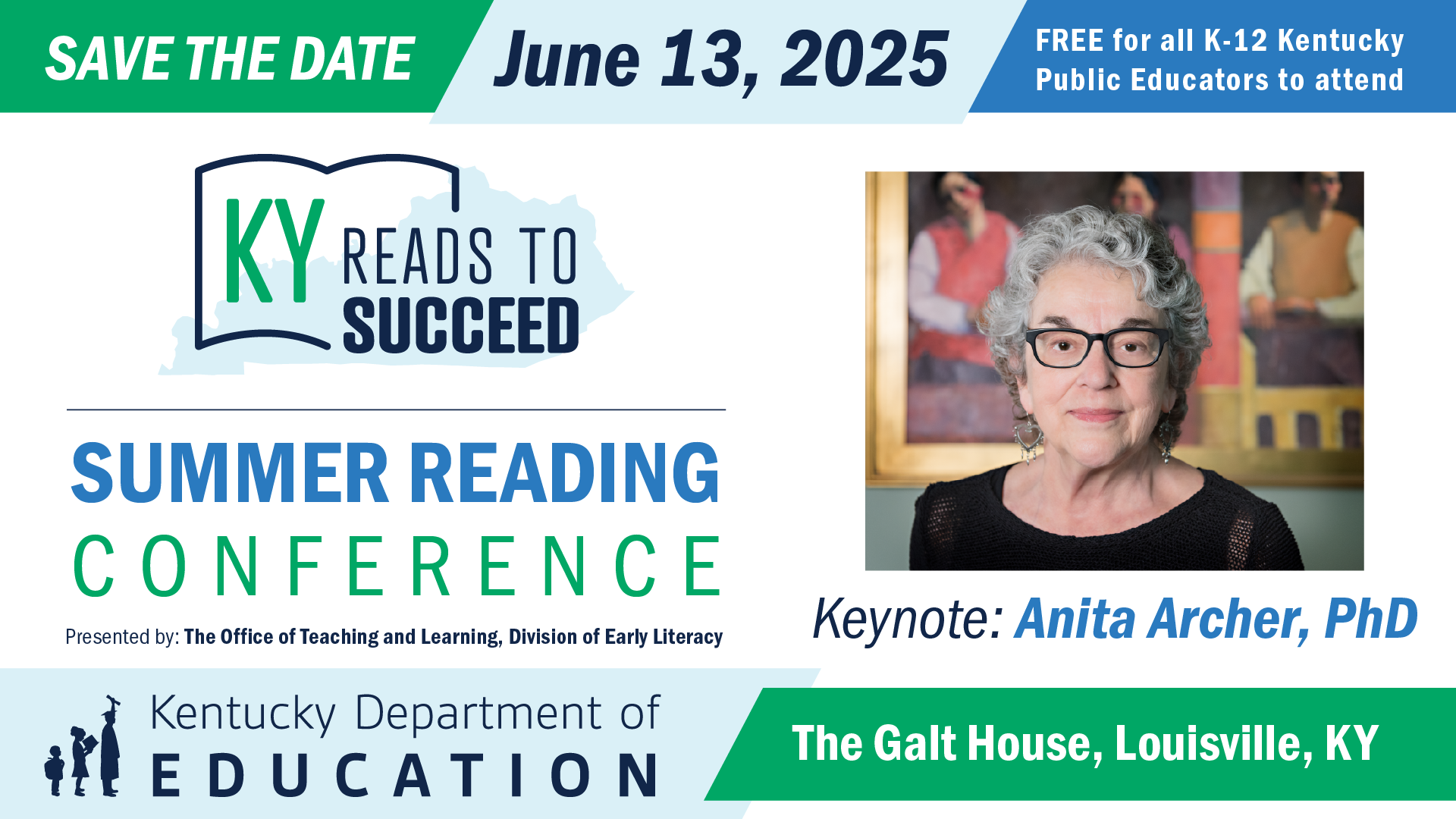
Veda McClain
By Veda Pendleton McClain
veda.mcclain@education.ky.gov
Finishing a good book or interesting article is always a bittersweet moment for me. While I am often elated to come to the end of a work, I am sometimes saddened because my opportunity to interact with that text has ceased. My consolation after reading a text is to simply reflect on the experience I have just had and relish the anticipation of my next reading adventure.
While reading a text, I usually find myself becoming fully engaged with it. If it is a novel, I try to put myself in the role of the protagonist. If it is nonfiction – especially self-help – I try to identify with the perspective of the one offering the insight and wisdom.
Most importantly though, when I am reading a text, I tend to consume it. I usually find myself underlining important parts to which I will return later and ponder. Sometimes I will put two lines under key words, especially if I think I might use those words in my writing or conversations about the text. At other times, I look up unfamiliar words, try them out orally and practice saying them, because I want them to become a part of my own speech.
In the margins, I write questions in pencil about something the author has said. Those questions are often thought provoking and challenge what the author has written. At other times, I write notes and use exclamations in places where I agree with the author or find phrases that are funny or affirming. On sticky notes, I purposefully jot down brief notions about topics, ideas or feelings that I want to remember for later to contemplate, to discuss with others or to use in my own writing. When I make a meaningful personal connection with what the author has written, I highlight that portion of the text.
In other words, as I read, I tend to become fully engaged with the text to the extent that what I am reading becomes a living and breathing part of my life.
My best recollection of when I began to consume reading material in this format began in high school when I had to read about 300 pages each week. On the second day in a 10th-grade English class, the teacher asked me to summarize the first few pages of “Tess of the D’Urbervilles.” I could not do it, but her comments to me that day challenged me to develop reading strategies that would help me learn, make meaning, and read texts differently and more intentionally. I had to learn how to annotate texts if I wanted to fully understand the text, to think critically about it and to retain what lay before me.
Annotating texts is an essential writing-to-learn strategy that our students need in order to be successful in the classroom. It is more than simply highlighting all of the texts. It is more about purposefully identifying a reason for reading and engaging with the text that challenges readers to think analytically and critically about the text.
Annotating is identifying the author’s purpose, summarizing, looking for patterns, giving an opinion, reflecting and reacting to text. All students should be taught how to annotate. It helps readers identify what it is about a text that they do not understand as they question themselves about their own thoughts about the reading.
Students should learn to use this writing to learn strategy because annotating:
- gives the reader a specific purpose for reading.
- helps the reader process information at a deeper level.
- helps with information recall.
- assists readers in understanding difficult texts.
- aids in critical thinking about the text and gives students a life-long skill in interpreting texts.
Over the years, annotating texts has become a part of me just as the books I am reading become a part of me. I annotate most of what I read with differing purposes in mind. Regardless of the purpose, I always want get the most out of what I am reading and annotating helps.
MORE INFO …
Phi Delta Kappan: “Improving reading with complex texts”
Expeditionary Learning: “Annotating Text”
“Study Strategies: A Simple Guide to Text Annotation”
The Joy of Teaching: “Annotating Text”
Education World: “Annotating as an Assessment Tool”




…Super teaching device!